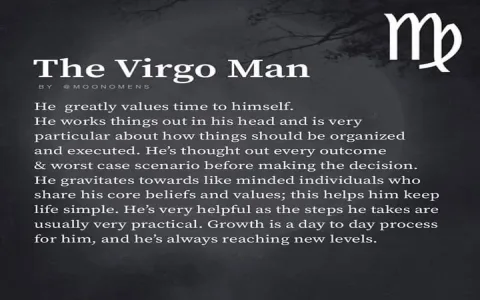Man, let me tell you something about these so-called “Virgo babies.” It’s not about astrology, alright? It’s about a personality type that seems to come pre-programmed to demand absolute perfection in everything from the wrinkle level of their blankets to the exact minute their bottle hits their lips. It drove us absolutely nuts.
My kid—let’s just call him The Regulator—was a nightmare sleeper. We thought we had the whole sleep training thing nailed. We read the books, we tracked the naps, we enforced the black-out curtains. But every time, every single time, if the routine was off by even three minutes, or if the light outside shifted slightly, he’d erupt. Not just cry. I mean full-on, lung-busting, hour-long screaming fits that left both my wife and me physically trembling and questioning all our life choices.
For months, we were functioning on fumes. I’d collapse at work, dragging myself through meetings, feeling like I had permanent low-grade flu. I remember one Tuesday morning, I was sitting at my desk, and I realized I had put my keys in the fridge instead of the bowl. That was my wake-up call. I was losing my grip. Something had to change, and fast, because I couldn’t afford to get fired and this tiny, demanding tyrant clearly wasn’t going to adjust to our reality.

The Great Routine Overhaul: Finding the Gaps
I started digging into the specifics, right? Not the general sleep advice. I started tracking exactly what triggered the meltdown. I bought a cheap tablet and rigged up a 24/7 video feed. I didn’t just record when he cried; I recorded everything leading up to it.
What I discovered was chaos masquerading as a schedule. We thought we were consistent, but we were sloppy. My wife would rock him for four minutes; I’d rock him for seven. Sometimes the bath was 6:45 PM, sometimes 7:15 PM. To a highly sensitive, structure-loving little mind, this wasn’t routine—it was random torture. The kid needed precision, and we were delivering slop.
The moment that really clarified everything was when I watched the footage of his 2 AM wake-up. He cried for maybe thirty seconds, then stopped. Then he started crying again, harder. Why the pause? I rewound it. The pause happened when the floorboard outside his door creaked—the exact spot where I usually stood waiting for him to settle. He wasn’t crying because he was hungry or wet; he was crying because he knew the routine (the floor creaking) meant I should be coming in to fix the problem, but I wasn’t moving fast enough.
I realized I couldn’t beat the demanding nature; I had to weaponize it. I had to create a routine so ridiculously detailed that even a tiny perfectionist couldn’t find a flaw. We tossed out the gentle ‘go-with-the-flow’ advice and implemented what I call the “Bulletproof Sleep Protocol.”
Implementation: The Bulletproof Sleep Protocol
We started small, focusing purely on consistency—not just of events, but of the exact manner of those events. We wrote down every detail, from the speed of the rocking chair to the exact temperature of the room. We treated it like a mission-critical deployment.
Here’s the stuff we had to enforce and document:
- The 6:30 PM Sensory Cutoff: We completely banned all loud, sudden, or visually stimulating activities past 6:30 PM. No TV, no bright toys. We shifted to low, yellow-spectrum light only. This meant zero sensory “noise” for him to filter through later.
- The 7:00 PM Water Temperature Lock: I bought two cheap thermometers. One for the bath water, one for the bottle water. Bath water had to be 98 degrees F, no exceptions. Bottle water had to be 94 degrees F. Before, we just guessed. Guessing is the enemy of the Virgo baby.
- The Shirt Swap: This was key. I started wearing one specific, ratty t-shirt only during the day, specifically while doing physically demanding work or cooking dinner. Right before the 7:30 PM feed, I’d put that shirt on my side of the crib railing. He could smell the familiar, slightly sweaty ‘Dad working’ smell. It was weird, but it worked as a sensory anchor.
- The 7:45 PM Clockwork Entry: We set a strict timer. The final rocking, the lullaby (always the same song, sung at the same volume), and the moment he hits the mattress had to be 7:45 PM, plus or minus sixty seconds. If we missed the window, we didn’t try to cram it in; we reverted to a calm, low-light holding pattern and started the final routine attempt fifteen minutes later.
We didn’t just do these things; we tracked the data. If he woke up, we checked the log: Was the temperature exactly right? Did the shirt placement get skipped? Nine times out of ten, we found that we were the variables, not him.
The Payoff: Why We Stick to the Script
It took about three weeks of military-level precision, but the shift was immediate and dramatic. The Regulator started sleeping seven hours straight, then nine. By four months old, he was reliably hitting ten hours. The meltdowns vanished because his environment was finally predictable enough to satisfy that internal need for structure.
People look at our routine and think we’re nuts. They say, “You’re living under the thumb of a baby!” And yeah, maybe we are. But here’s the kicker: we found the loophole. By giving him complete control over the predictability of his world, we finally bought ourselves the control over our sleep. That trade-off is worth every minute of meticulously calibrated bath water and sweaty old t-shirts. My anxiety dropped, my focus at work returned, and frankly, my marriage recovered because we weren’t glaring at each other through sleep-deprived zombie eyes anymore. If you’ve got a little tyrant demanding order, stop trying to fight the order. Embrace the chaos of absolute consistency. It’s the only way out.







